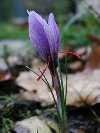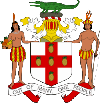 National Day commemorates the day in 1955 when Soviet occupation forces left Austria after taking control in 1945. The Austrian State Treaty of May 15, 1955, ensured that Austrians would regain sovereignty over their country on July 27. By October 26, it was once again a free, independent country. Although it is a national holiday in Austria, people do not get the day off from school or work, mainly because of the idea that one’s country is best served by working. Schools hold special presentations, and the president delivers a speech. Discuss
National Day commemorates the day in 1955 when Soviet occupation forces left Austria after taking control in 1945. The Austrian State Treaty of May 15, 1955, ensured that Austrians would regain sovereignty over their country on July 27. By October 26, it was once again a free, independent country. Although it is a national holiday in Austria, people do not get the day off from school or work, mainly because of the idea that one’s country is best served by working. Schools hold special presentations, and the president delivers a speech. Discuss
Source: The Free Dictionary

 The
The  In
In 
 A Chinese holiday,
A Chinese holiday, .jpg) This Japanese festival is named after
This Japanese festival is named after  In
In .svg.png)
 More than 40 years ago, a man from
More than 40 years ago, a man from